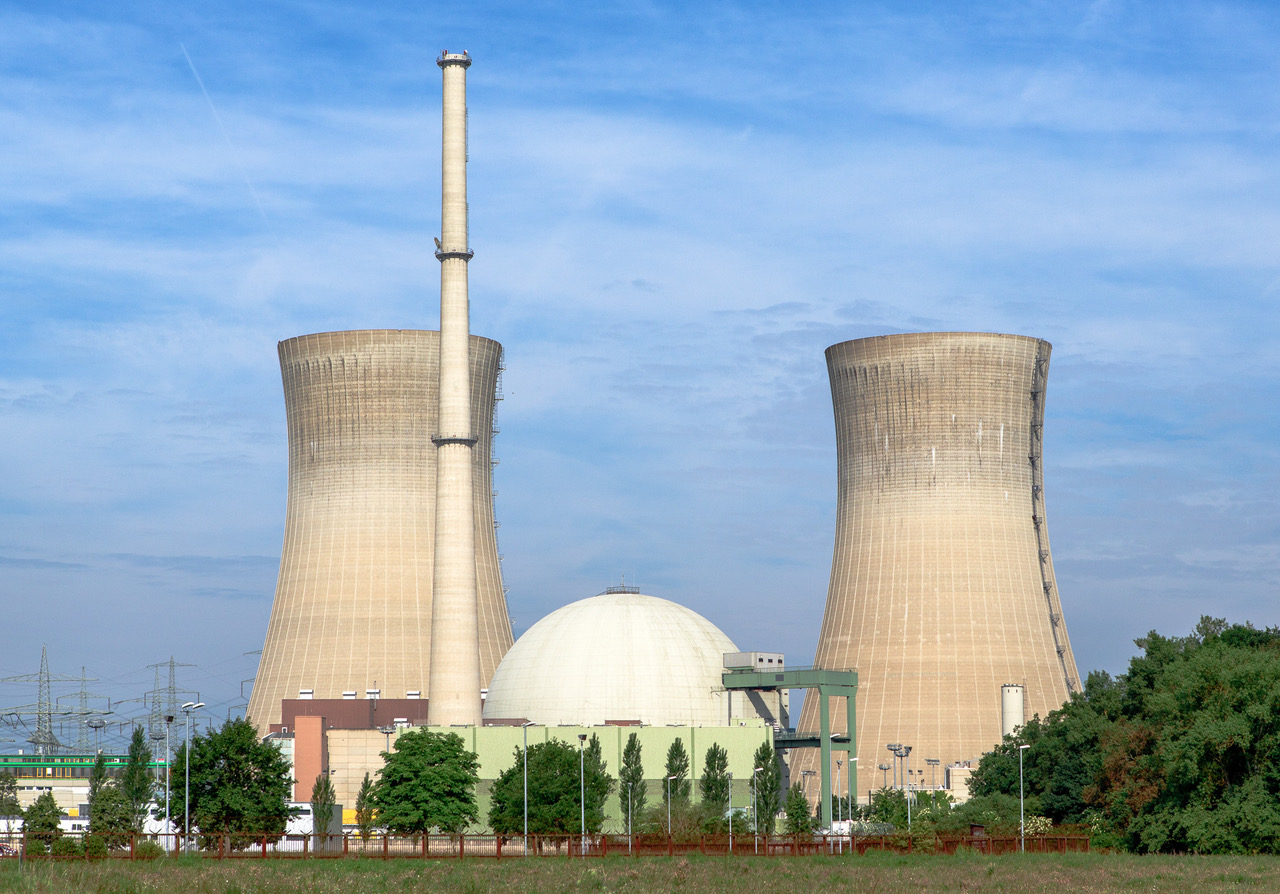The petition written in the Malay language, was prepared by Arveent Srirangan Kathirtchelvan, #Liberasi founder and chief coordination, and supported by #Liberasi; Women in Nuclear (WiN); Malaysia Nuclear Engineering Student Society (NESS), Universiti Teknologi Malaysia; Jamal Khair Ibrahim, Independent Nuclear Power Programme Development and International Nuclear Techno-political Affairs Consultant; and Dr Mohd Syukri bin Yahya, PhD Nuclear Engineering.
Whilst the petition did not go so far as to urge MESTECC to reverse its decision to close down the MNPC, however it shows that there are organisations and individuals in Malaysia, which for scientific, professional or academic reasons, or for reasons of special interest – are in favour of Malaysia pursuing development of nuclear technology and industry, including the adoption of nuclear power.
One of these not included amongst the supporters of this petition is the Malaysian Nuclear Society (MNS), established in 1989, which published a White Paper on Nuclear Energy, dated 23 August 2008, which welcomed the decision in the 2009 budget speech that Malaysia would be “exploring nuclear energy to ensure long term energy security of the nation.” The MNS also welcomed the positive statement by the Minister of Science, Technology and Innovation in support of nuclear energy as was reported by Bernama, 19 August 2008.
The white paper went on to state that nuclear energy was used to generate 17% of the world’s electricity at that time, and that more countries were adopting nuclear energy as a means to overcome the dwindling resource of fossil fuels, limitation of hydro electric resources, inability of alternatives (solar, wind) to take up the slack in demand, environmental concern (sulphur dioxide, nitrogen oxides from fossil fuels, loss biodiversity for hydro), the inadequate capacity of renewable (biofuel, etc.) to supply bulk and industrial power needs and that nuclear energy has proven to be a reliable, clean, and safe source of energy, so Malaysia should adopt nuclear power as part of its energy mix.
The paper also urges the government to develop the human capital of between 200 to 1,000 skilled workers who would be required to operate and maintain nuclear power plants, and went on to cite how investments in the science and technology behind nuclear power plants in Japan and South Korea had uplifted their electronics, automotive and heavy industry sectors. It can be downloaded from MNS’ website at http://www.nuklearmalaysia.org/
Fast forward to 24th April 2019, Arveent from #Liberasi, Dr. Mohd Syukri from the MNS and Datin Zarina Masood from the WiN visited MESTECC to hand over a joint memorandum by #Liberasi and the MNS entitled – Memorandum Supporting Nuclear Power Incorporation in the Malaysian Energy Mix, to MESTECC minister Y.B. Yeo Bee Yin, through her senior private secretary, Mohd Najeeb Abdullah and her special functions officer, Dr. Gary William Theseira. The memo can be downloaded from #Liberasi’s website at https://hashtagliberasi.org/

In their memorandum, they expressed their concern over Prime Minister Tun Dr. Mahathir’s plans to increase the proportion of electricity generated in Malaysia from coal, especially since coal-fired power plants are known to emit immense amounts of carbon dioxide, sulphur dioxide, nitrogen oxides, particulate matter (such as soot) and other such pollutants that not only would worsen climate change but also pose dangerous health hazards to society at large.
The memorandum cited figures from the Energy Commission’s Malaysia Energy Statistics Handbook 2017, where in 2016, Malaysia generated 156,003 GWh of electricity. Of which 43.5% was from natural gas, 42.5% from coal, 13.0% from hydroelectricity, 0.4% from diesel, 0.3% from oil and 0.3% from other primary sources.
Whilst natural gas is generally much cleaner than coal, however like coal and oil, it is a hydrocarbon which emits carbon dioxide into the atmosphere, which is widely believed to be a major contributor to rising atmospheric temperatures – i.e. global warming.
Amongst their recommendations are that in preparation to adopt nuclear power plants, the Malaysian government should immediately reinstate the Malaysian Nuclear Power Corporation (MNPC) to continue their research into nuclear power adoption for Malaysia and publish their findings and recommendations openly to all Malaysians to bolster education efforts.
Malaysia should then finalise a roadmap for the adoption of nuclear power in Malaysia to gradually lessen dependence on coal. Next, Malaysia should ratify all conventions on nuclear power utilisation including those related to nuclear weapon proliferation, nuclear waste management and employ strict measures to ensure minimal chance of toxic leakages or high levels of radiation released to the public, as per the recommendations from the International Atomic Energy Association (IAEA).
Finally, Malaysia should streamline regulation to drive down the cost of construction for nuclear power plants.
After Malaysia has adopted nuclear power, the memorandum recommends that the government should immediately allocate funds to build nuclear power plants in Malaysia to an acceptable capacity. They recommend a 2000MW plant for a start which would immediately offset about 10 % of Malaysia’s electricity usage.
As more nuclear power plants are started up, it will reduce Malaysia’s dependency on coal and at the same time the government should decommission coal-fire power plants.
Concurrently with nuclear power plant construction, Malaysia must invest in nuclear waste disposal sites to safely store low, intermediate and high-level nuclear wastes.
Low level waste includes scrap metal, paper and plastics which have been contaminated with radioactive material or exposed to neutron radiation comprise around 90% of waste generated from nuclear power plants and can be stored in purpose built sites similar to municipal waste dumps but subject to strict limits on level of radioactivity.
At the same time, long term disposal options much be considered for certain low level waste, such as graphite from reactor cores, which exceed this limit, though such waste constitutes a very small proportion of the whole. Traditionally, low level waste is encased in cement within metal containers which are capped when full.
Intermediate level waste are similarly encased in cement and packed into steel, concrete or ductile cast iron boxes, though their long-term management depends on their radiation level and can vary from near surface disposal similar to low level waste to more robust long term storage methods similar to high level waste.
Whilst high level waste, such as spent fuel rods and other reactor contents comprise a very small proportion of all nuclear waste, however they account for 99% of total radioactive content and whilst their level of radioactivity decreases over time due to radioactive decay, however they need to be stored safely for thousands of years.
High level waste is typically stored initially underwater in pools on-site at their respective power plants for about 50 years to allow for the waste to cool and for their radioactivity to reduce. These pools are made of thick, reinforced concrete with steel liners withstand various potential hazards such as flooding and earthquakes and will hold all of the waste fuel produced over the lifetime of the reactor. Where such waste needs to be transported, they encased in solid glass and placed in stainless steel containers for temporary storage.
Options for extended storage of high level waste includes to isolate them from the human environment by deep geological disposal under the deep ocean floor, on the ocean floor, deep in bedrock, in glaciated areas, extraterrestrial disposal, and destruction by nuclear transmutation.
However, since international disposal sites for high level nuclear waste currently do not exist, the memorandum proposes that Malaysia could take advantage of this economic opportunity to permanently and securely store high level nuclear waste from around the world for a fee.
The memorandum estimates that Malaysia could charge around Aus$1.7 million (RM4.83 million) to store one tonne of imported high level nuclear waste and that a 1,000MW nuclear reactor would produce between 25 to 30 tonnes of nuclear waste per year, Malaysia could earn between RM42.5 and RM51 million per year just from that one 1,000MW reactor, and much more from storing high level waste from other nuclear reactors worldwide.
Whilst temporary storage at each reactor’s site for up to 50 years does not necessitate Malaysia to immediately build permanent disposal sites for such waste, however the memorandum recommends that the government identifies suitable storage sites before hand and builds one permanent disposal site immediately after identification, provided there are more than one suitable site identified.
The memorandum also recommends that Malaysia decrease subsidies given to fossil fuel-based electricity generation in stages to divert them to nuclear power plants to help in initial economic viability.
It also proposes that Malaysia increase research and development (R&D) efforts to better the sustainability of nuclear power in key areas including recycle reactors using spent fuel and thorium to generate greater amounts of electricity, especially since thorium deposits are abundant in Malaysia and not only can they reduce Malaysia’s dependency on uranium in the first place but the spent fuel generated from uranium-run reactors can be used to produce more energy, increasing the efficiency overall process.
The memorandum also urges the government that R&D should also be conducted in the extraction of uranium from sea water to decrease dependency on imported uranium, as well as research into the potential of different configurations or designs for nuclear reactors to increase safety and efficiency, including molten salt reactors.
In Part 3, we’ll deal with the arguments presented in the memorandum against renewable energy alternatives such as solar voltaic, wind and biomass being pursued by Malaysia instead of nuclear.








